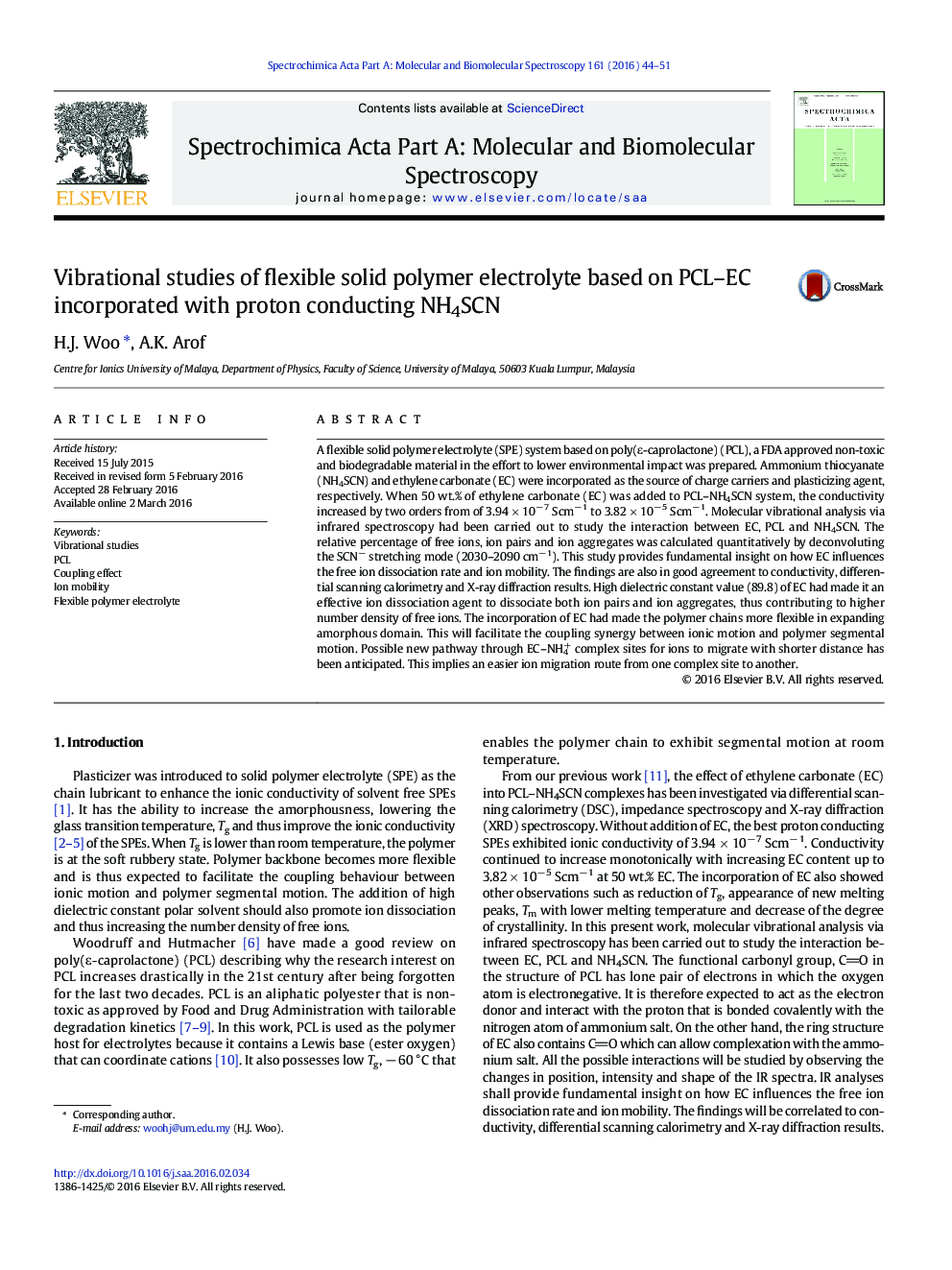| Article ID | Journal | Published Year | Pages | File Type |
|---|---|---|---|---|
| 1228845 | Spectrochimica Acta Part A: Molecular and Biomolecular Spectroscopy | 2016 | 8 Pages |
•Effect of EC on the free ions dissociation rate and ion mobility was studied.•SCN− stretching mode reveals the relative percentage of various ionic species.•EC dissociates ion aggregates effectively to increase number density of free ions.•EC facilitated the coupling between ionic motion and polymer segmental motion.•Ions could migrate with shorter distance through new EC–NH4+ complex sites.
A flexible solid polymer electrolyte (SPE) system based on poly(ε-caprolactone) (PCL), a FDA approved non-toxic and biodegradable material in the effort to lower environmental impact was prepared. Ammonium thiocyanate (NH4SCN) and ethylene carbonate (EC) were incorporated as the source of charge carriers and plasticizing agent, respectively. When 50 wt.% of ethylene carbonate (EC) was added to PCL–NH4SCN system, the conductivity increased by two orders from of 3.94 × 10− 7 Scm− 1 to 3.82 × 10− 5 Scm− 1. Molecular vibrational analysis via infrared spectroscopy had been carried out to study the interaction between EC, PCL and NH4SCN. The relative percentage of free ions, ion pairs and ion aggregates was calculated quantitatively by deconvoluting the SCN− stretching mode (2030–2090 cm− 1). This study provides fundamental insight on how EC influences the free ion dissociation rate and ion mobility. The findings are also in good agreement to conductivity, differential scanning calorimetry and X-ray diffraction results. High dielectric constant value (89.8) of EC had made it an effective ion dissociation agent to dissociate both ion pairs and ion aggregates, thus contributing to higher number density of free ions. The incorporation of EC had made the polymer chains more flexible in expanding amorphous domain. This will facilitate the coupling synergy between ionic motion and polymer segmental motion. Possible new pathway through EC–NH4+ complex sites for ions to migrate with shorter distance has been anticipated. This implies an easier ion migration route from one complex site to another.
Graphical abstractFigure optionsDownload full-size imageDownload as PowerPoint slide
